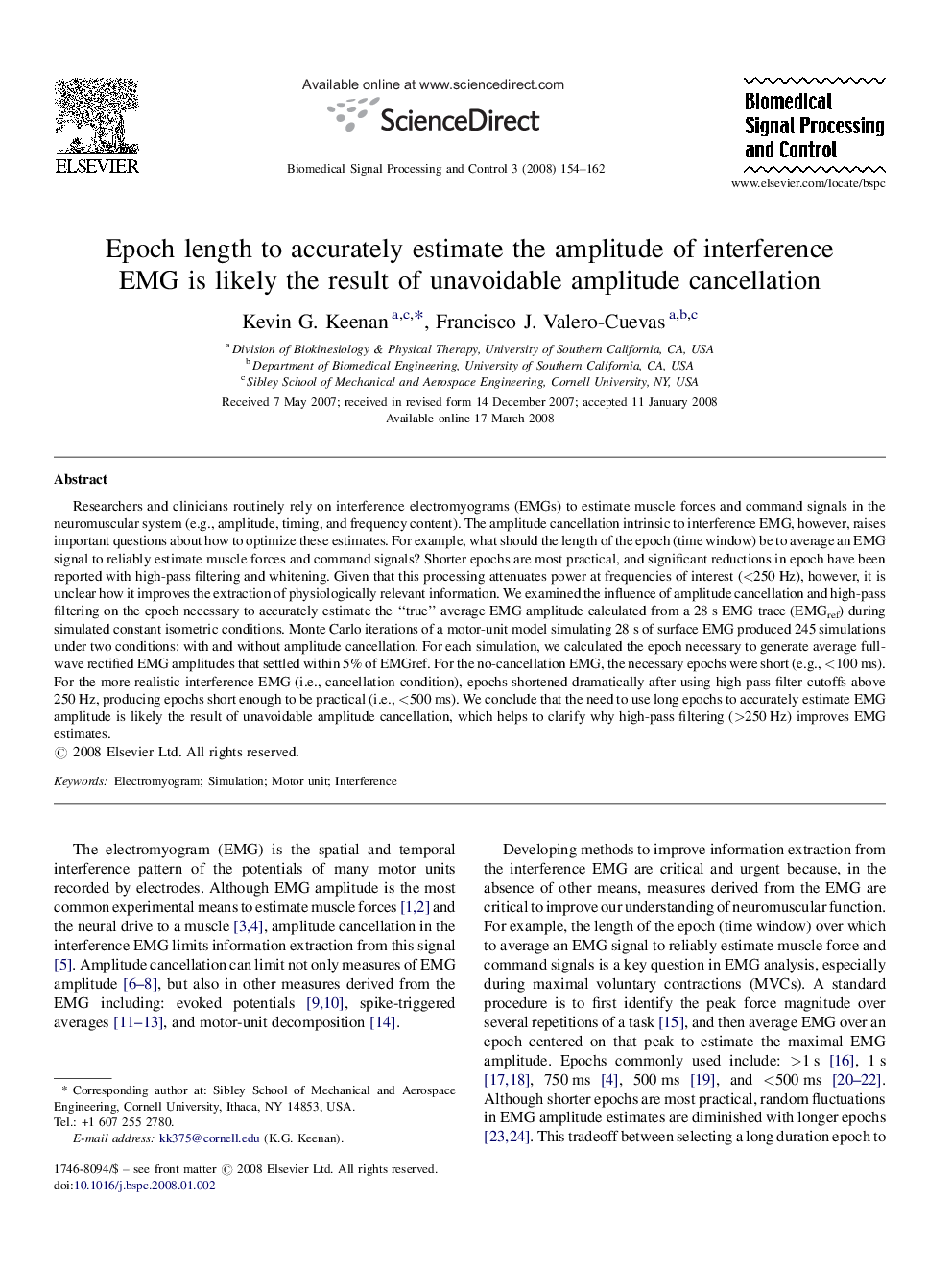| کد مقاله | کد نشریه | سال انتشار | مقاله انگلیسی | نسخه تمام متن |
|---|---|---|---|---|
| 557694 | 874771 | 2008 | 9 صفحه PDF | دانلود رایگان |

Researchers and clinicians routinely rely on interference electromyograms (EMGs) to estimate muscle forces and command signals in the neuromuscular system (e.g., amplitude, timing, and frequency content). The amplitude cancellation intrinsic to interference EMG, however, raises important questions about how to optimize these estimates. For example, what should the length of the epoch (time window) be to average an EMG signal to reliably estimate muscle forces and command signals? Shorter epochs are most practical, and significant reductions in epoch have been reported with high-pass filtering and whitening. Given that this processing attenuates power at frequencies of interest (<250 Hz), however, it is unclear how it improves the extraction of physiologically relevant information. We examined the influence of amplitude cancellation and high-pass filtering on the epoch necessary to accurately estimate the “true” average EMG amplitude calculated from a 28 s EMG trace (EMGref) during simulated constant isometric conditions. Monte Carlo iterations of a motor-unit model simulating 28 s of surface EMG produced 245 simulations under two conditions: with and without amplitude cancellation. For each simulation, we calculated the epoch necessary to generate average full-wave rectified EMG amplitudes that settled within 5% of EMGref. For the no-cancellation EMG, the necessary epochs were short (e.g., <100 ms). For the more realistic interference EMG (i.e., cancellation condition), epochs shortened dramatically after using high-pass filter cutoffs above 250 Hz, producing epochs short enough to be practical (i.e., <500 ms). We conclude that the need to use long epochs to accurately estimate EMG amplitude is likely the result of unavoidable amplitude cancellation, which helps to clarify why high-pass filtering (>250 Hz) improves EMG estimates.
Journal: Biomedical Signal Processing and Control - Volume 3, Issue 2, April 2008, Pages 154–162